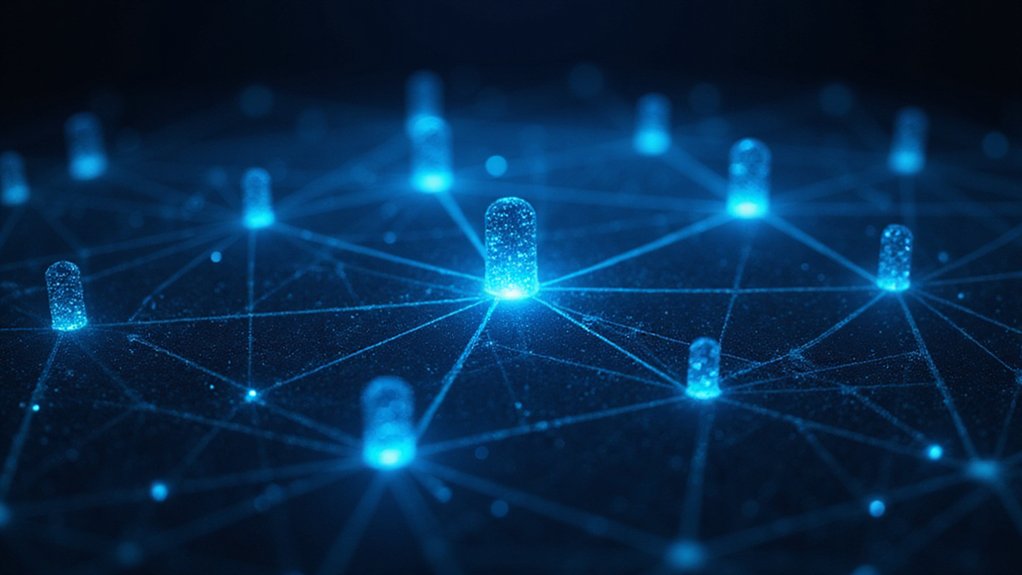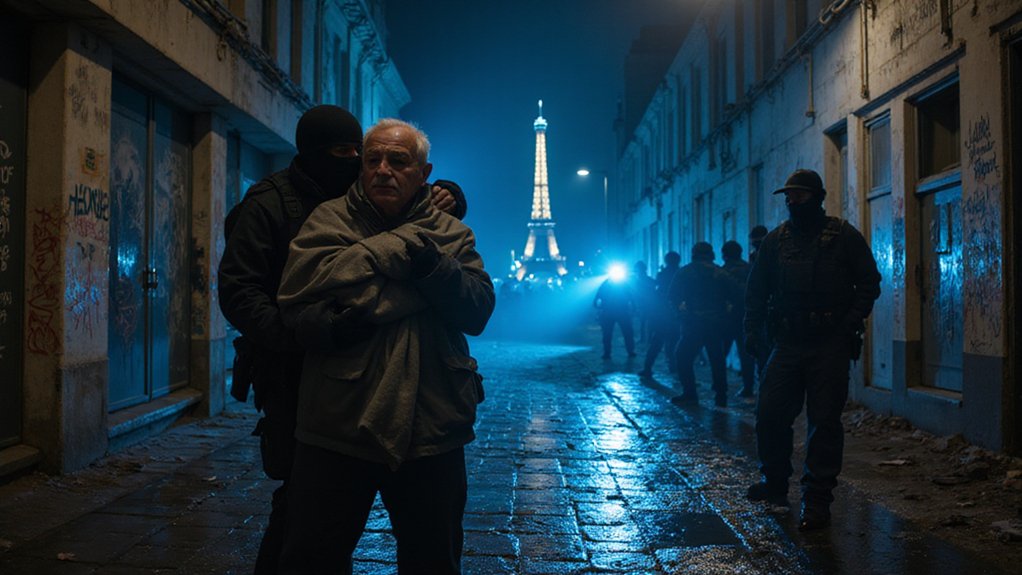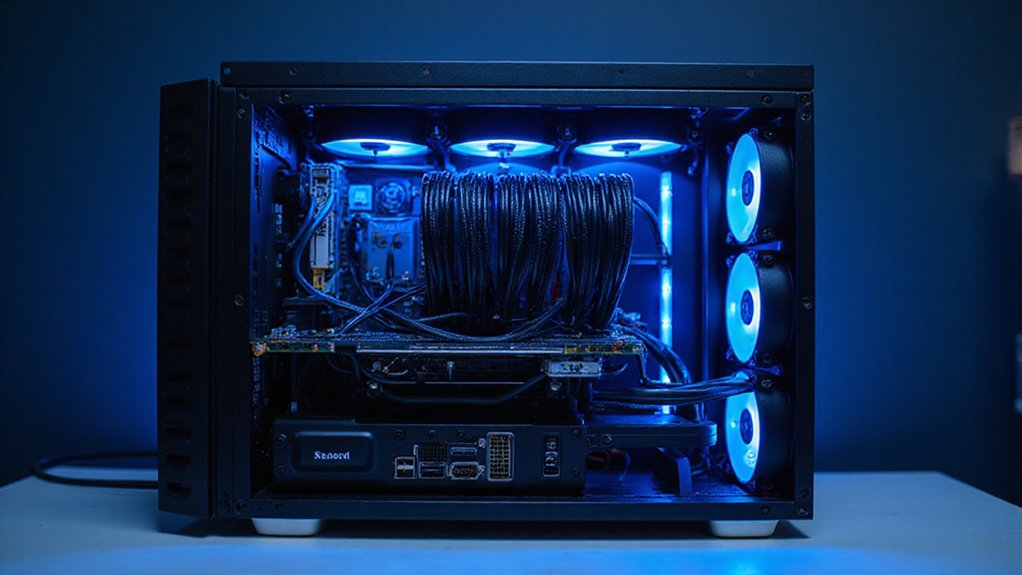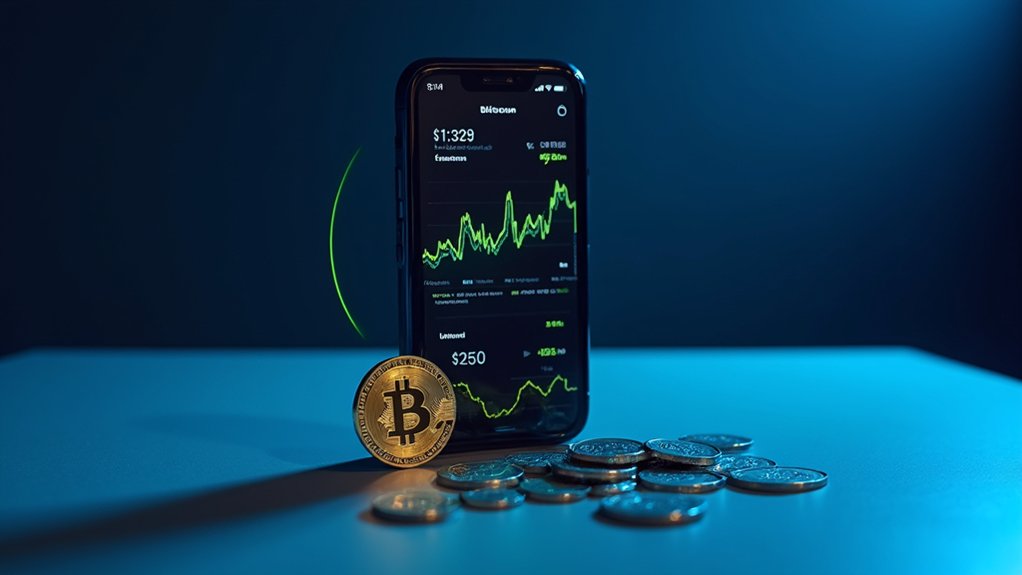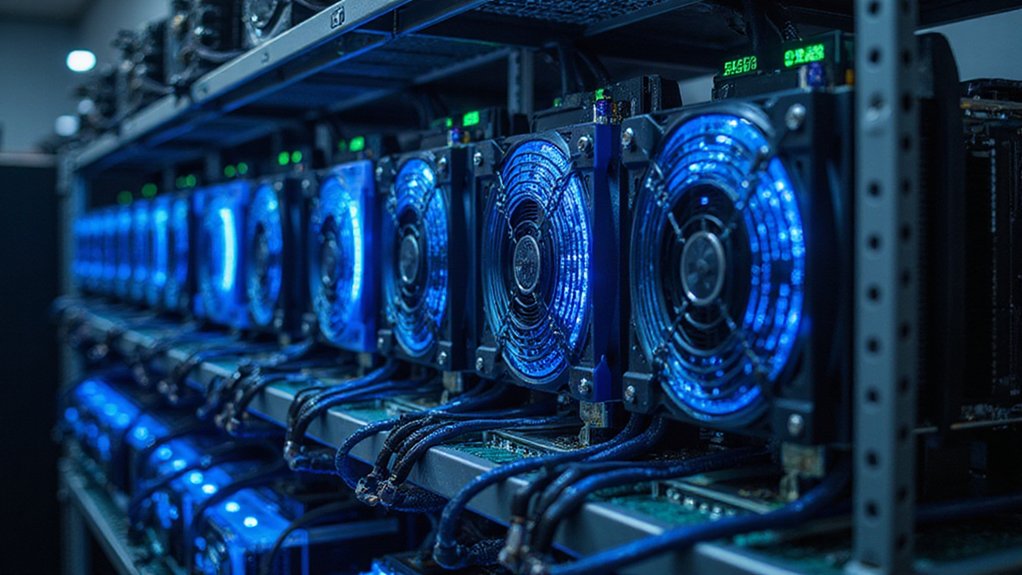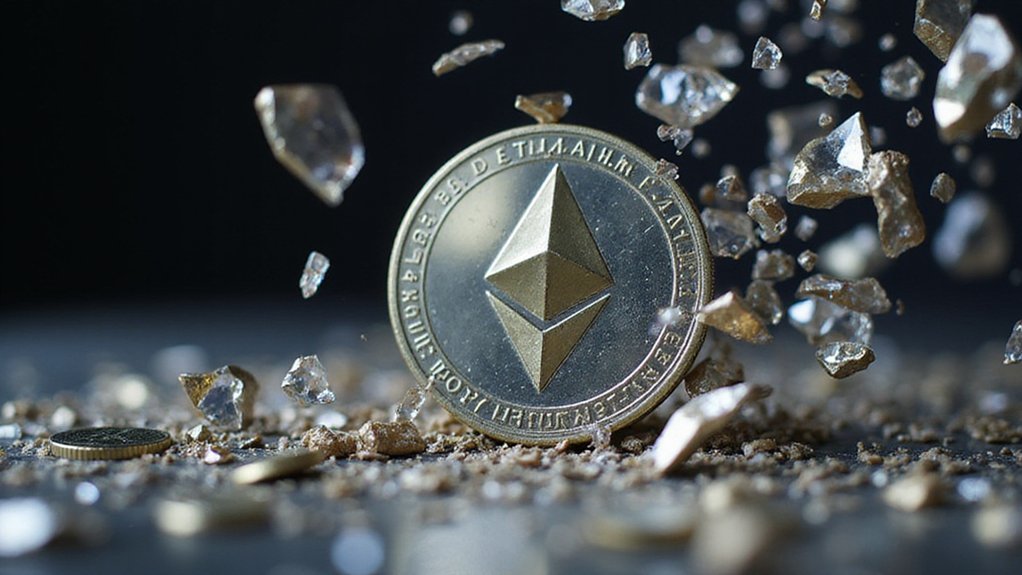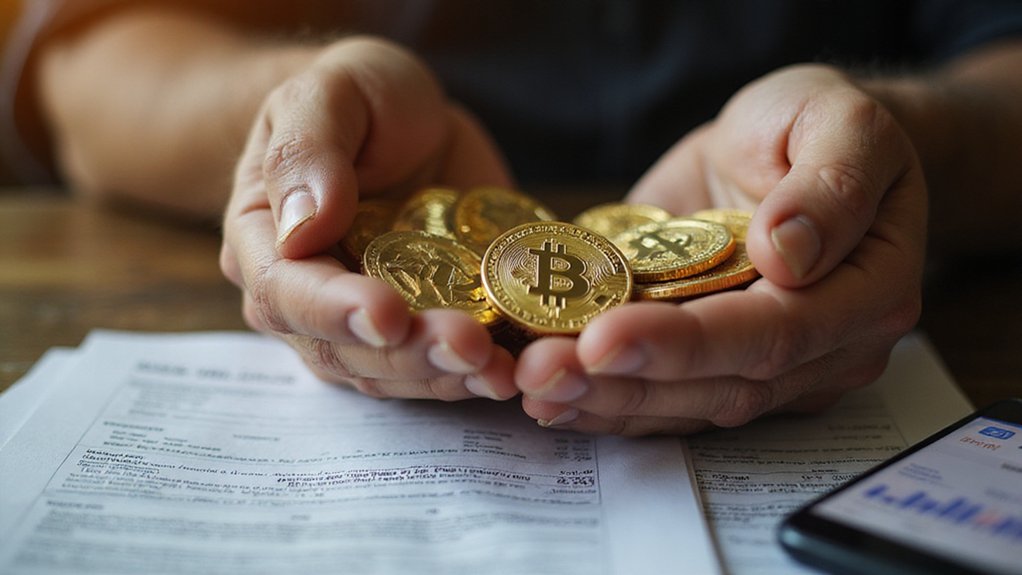A DAO (Decentralized Autonomous Organization) represents the blockchain era’s reimagining of traditional organizational structures—minus the hierarchy. These digital entities operate through community governance where token holders vote on proposals, while smart contracts automatically execute approved decisions. DAOs eliminate middlemen, offering radical transparency and democratic participation across applications from investment collectives to decentralized finance protocols. Despite promising innovations, they face notable challenges including regulatory uncertainty, security vulnerabilities, and the occasional catastrophic smart contract failure. The organizational revolution continues to unfold in code.
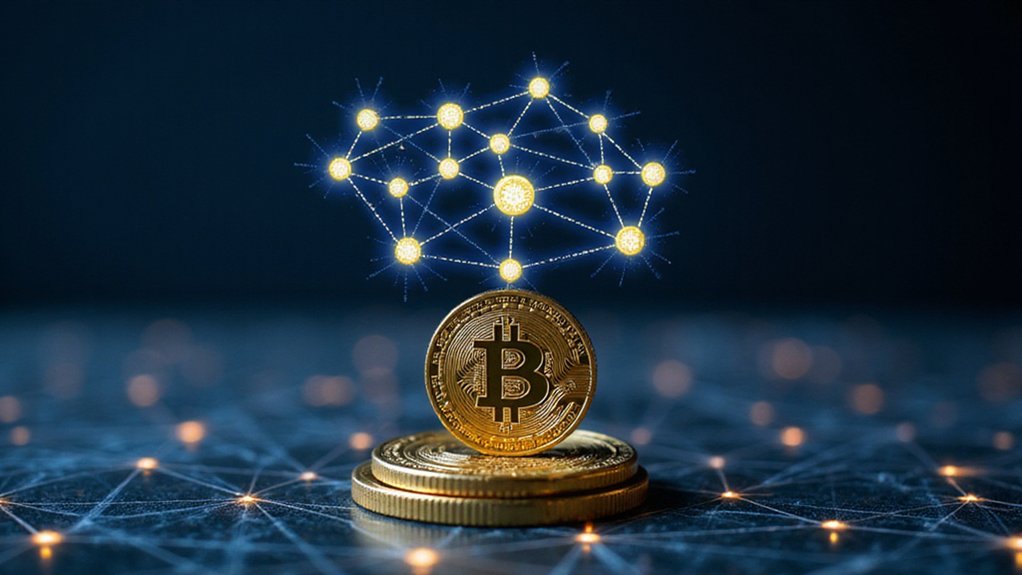
A Decentralized Autonomous Organization—colloquially known as a DAO—represents one of the more fascinating innovations to emerge from the blockchain revolution, operating as a novel organizational structure that fundamentally reimagines traditional hierarchies.
Unlike conventional organizations with centralized leadership, DAOs function through community governance, with operations and decision-making processes encoded in transparent smart contracts that execute automatically when predetermined conditions are met.
DAOs replace hierarchical authority with algorithmic consensus, encoding governance into unbiased code that executes the community’s collective will.
These internet-native entities effectively eliminate the need for traditional management structures while maintaining—some might argue enhancing—operational efficiency.
The architecture of a DAO relies on blockchain technology’s immutable ledger, where every transaction and governance decision remains permanently recorded and accessible to all participants. The concept of DAOs has evolved significantly since the term first emerged in the 1990s, becoming widely adopted by 2013 as blockchain technology matured.
This radical transparency (unthinkable in traditional corporate structures where information asymmetry often benefits the few) creates an environment where trust derives not from authority but from verifiable code.
Stakeholders, typically holding governance tokens that represent both ownership and voting rights, participate directly in organizational decision-making through proposal systems requiring majority consensus.
These tokenized governance models have found particular utility in decentralized finance protocols, where community members collectively determine everything from fee structures to treasury allocations.
The model has similarly revolutionized crowdfunding mechanisms, creating investment opportunities unencumbered by traditional gatekeepers.
One might reasonably ask: when was the last time a retail investor had meaningful input into a Fortune 500 company’s strategic direction?
Despite their innovative potential, DAOs face considerable challenges that temper unbridled enthusiasm.
Regulatory uncertainty looms large—are these entities partnerships, corporations, or something entirely new?—while security vulnerabilities in underlying smart contracts pose existential risks, as evidenced by past incidents where exploits drained treasuries.
Scalability issues inherent to blockchain infrastructure similarly present obstacles to widespread adoption.
Smart contracts powering DAOs are typically written in specialized programming languages like Solidity for Ethereum, enabling the autonomous execution of governance decisions without human intervention.
Nevertheless, DAOs represent a profound reimagining of organizational structure, offering a glimpse into potentially more democratic economic systems.
Whether they ultimately supplement or supplant traditional models remains unclear, but their emergence has undeniably expanded the possibilities for collective economic coordination in the digital age.
Frequently Asked Questions
How Do DAOS Handle Legal Compliance Across Different Jurisdictions?
DAOs navigate cross-jurisdictional compliance through strategic legal wrappers and jurisdiction selection.
They typically establish unified governance structures while implementing standardized compliance frameworks to mitigate regulatory disparities.
Many opt for DAO-friendly jurisdictions like Wyoming or the Marshall Islands, which offer favorable legal recognition.
The savvier organizations maintain continuous regulatory monitoring and collaborate with legal experts versed in blockchain law—an investment that, while costly, proves considerably less expensive than regulatory penalties or existential legal challenges.
Can DAOS Interact With Traditional Financial Systems Effectively?
DAOs can interact with traditional financial systems, albeit with notable friction points. Through legal wrappers like the DARe initiative, these blockchain-native organizations navigate regulatory labyrinths that would otherwise render them financial pariahs.
Smart contracts reduce intermediary costs and accelerate transactions, yet regulatory uncertainty remains their Achilles’ heel.
Cross-border capabilities offer distinct advantages, though traditional institutions—hardly known for embracing disruption—approach with institutional wariness.
The integration continues to evolve, with jurisdictional compliance remaining the paramount challenge.
What Security Vulnerabilities Are Unique to DAOS?
DAOs face unique security vulnerabilities stemming from their decentralized nature.
Governance mechanisms invite voting manipulations, including plutocratic capture where token-wealthy entities gain disproportionate control.
Smart contract vulnerabilities—particularly re-entrancy attacks—pose existential threats, as demonstrated by the infamous “The DAO” hack.
Additionally, DAOs contend with consensus manipulation risks, oracle dependencies, and cross-chain vulnerabilities when implementing multi-chain governance.
Their transparency, ironically, becomes a liability as attackers can scrutinize code for exploitable weaknesses before launching sophisticated assaults.
How Are Conflicts Within DAOS Ultimately Resolved?
Conflicts within DAOs are resolved through a tapestry of mechanisms that balance on-chain automation with human intervention.
Smart contracts establish baseline rules while voting systems (often weighted by token holdings) determine collective decisions.
When code fails to capture nuance, DAOs employ mediation, arbitration platforms like Kleros, or multi-signature approval processes.
Though decentralized justice remains the ideal, some disputes inevitably cascade into traditional legal frameworks—a somewhat ironic concession for organizations built to transcend conventional governance structures.
Are DAOS More Environmentally Sustainable Than Traditional Organizations?
DAOs present a mixed environmental ledger that defies simple categorization.
Their paperless operations and reduced physical infrastructure yield tangible sustainability gains, while blockchain underpinnings—particularly proof-of-work systems—create significant carbon liabilities.
The shift to proof-of-stake mechanisms mitigates this somewhat¹.
Where traditional organizations excel through established regulatory frameworks and implementation capacity, DAOs counter with bureaucratic efficiency and global talent utilization without relocation impacts—a sustainability calculus still awaiting its definitive balance sheet.
¹Though Ethereum’s shift represents progress, the broader crypto ecosystem remains energy-intensive.
